The ABS data
The impact of the coronavirus on our lives has been profound. Australia has not had the high rates of infections and deaths many other countries have faced, but the economic and household impacts have been severe and ongoing. An estimated 2.7 people either lost their jobs or had their hours reduced for economic reasons between March and April.
The ABS has produced a range of statistical data (some of which are experimental) to measure the impact of the pandemic on Australian society. There were 15 additional COVID-19 specific for May alone.
Please note: The ABS is regularly updating its COVID-19 related datasets, and some of the datasets explored below would have been updated by the time this article is published.
Massive job losses
One of the most anticipated releases from the ABS is the labour force , which measured the initial impact of COVID-19 on jobs.
The latest figures for April were released on 14 May and, as expected, the data painted a grim picture. The unemployment rate jumped to 6.2% and the number of unemployed people increased by 104,500 to 823,300 people.
Australia's seasonally adjusted unemployment rate (all persons), April 2019 to April 2020
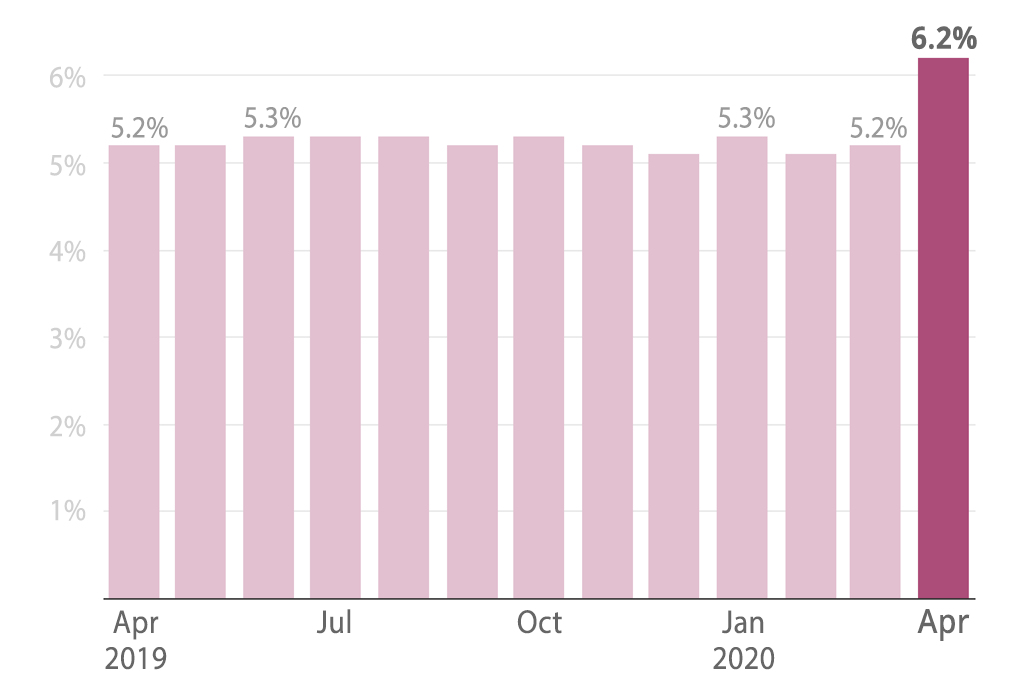
But this way of measuring unemployment masks the dramatic reduction in the actual number of people employed.
Between March and April 2020, the introduction of social distancing and other business-related restrictions resulted in employment decreasing by 594,300 to 12,418,700 people. More than half a million people lost work in just one month, and total hours worked fell 9.2%.
But how can the numbers for unemployment increase by only 104,500 people when the number of employed people reduced by 594,300?
The ABS defines unemployment as someone who is not working but is actively looking for work. And because a large majority of the 594,300 people who lost work did not actively look for work in the past month, they were not counted in the unemployment rate. There could be many reasons why people did not actively look for work during the shutdown, such as the very limited availability of suitable work, or people needing to be home to care for someone.
If everyone who lost work did actively look for work during the month, then the official unemployment rate would have been , with about 1.3 million people unemployed.
The number of employed people in Australia (seasonally adjusted), April 2019 to April 2020
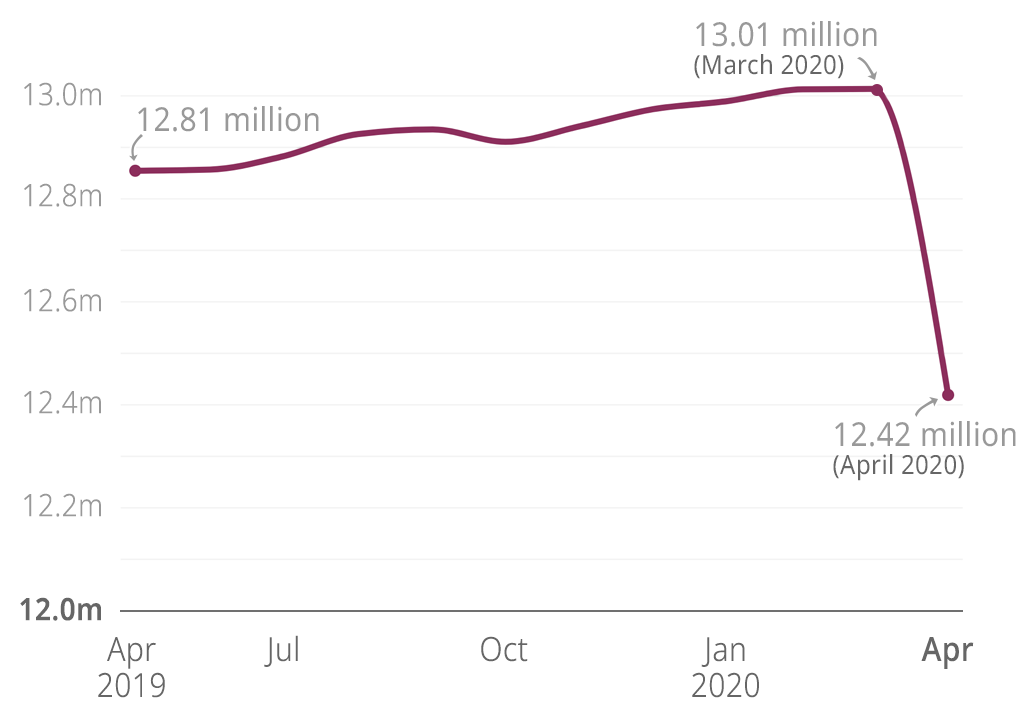
Women hardest hit by job losses
The Weekly Payroll Jobs and data shows the loss of employment has been particularly severe on women, who reported higher job losses across all age groups. The April labour force data confirms the survey: total hours fell 11.5% for women, compared to 7.5% for men.
The numbers are particularly dismal for young women aged under 20 years old. And in terms of age , people under 29 and those over 70 were the most impacted with job losses.
Proportional decrease in weekly payroll jobs by age and gender, week ending 14 March 2020 to week ending 18 April 2020
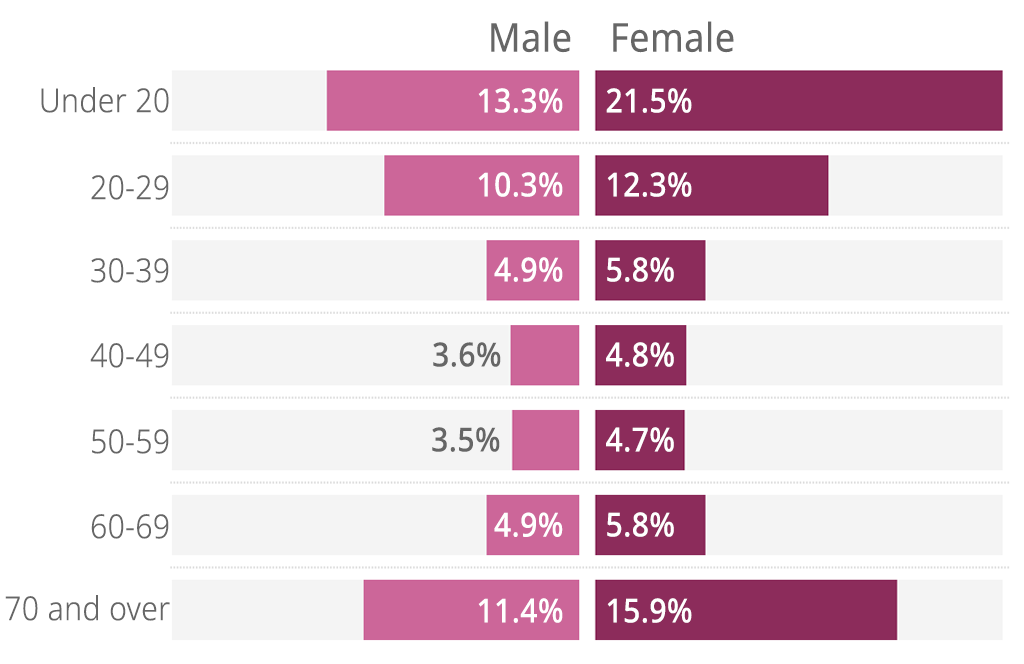
Hotels and restaurants are in trouble
The Weekly Payroll Jobs and data also shows that the impact was not uniform across all industries. The number of jobs in the accommodation and food sector reduced by 33.4% in one month. The arts and recreation sector was also badly affected, with a 27% reduction in jobs over the same period.
The decrease in the number of people working, week ending 14 March 2020 to week ending 18 April 2020

JobKeeper helped businesses hold onto staff
The introduction of the JobKeeper wage subsidy allowed many businesses to continue to employ staff during the shutdown period. According to ABS’s business data, about 44% of businesses said the announcement of the JobKeeper Payment scheme influenced their decision to keep staff employed.
by Jeff Borland for The Conversation shows the unemployment rate would have increased to 11.7% if not for JobKeeper.
The chart below shows a significant proportion of businesses have registered for JobKeeper payments (or are intending to register). About 80% of construction businesses have or will register, and 76% of accommodation and food-related services have or will register.
The proportion of businesses within industry sectors that have registered (or are intending to register) for JobKeeper payments, as at April 2020
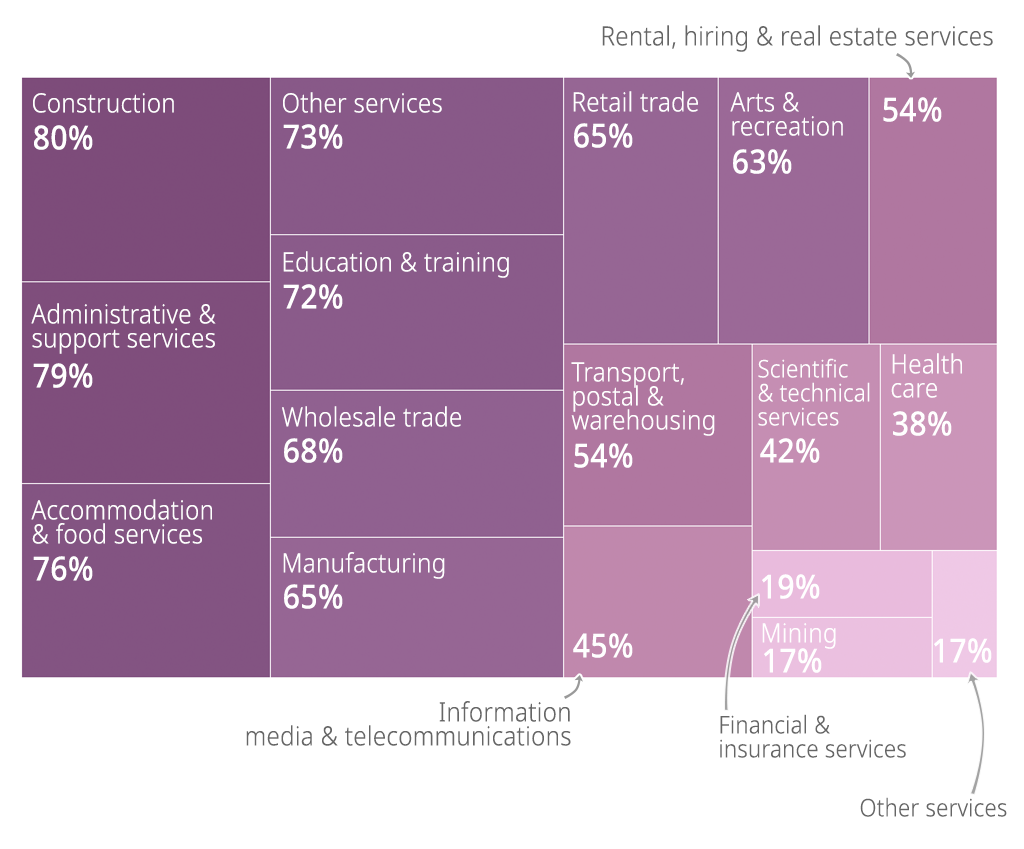
But not everyone is eligible for JobKeeper payments. The criteria for payments have meant that the accommodation and food sector has a relatively high proportion of staff ineligible, despite being one of the hardest hit sectors.
Proportion of business’ employees expected to be eligible for the JobKeeper Payment scheme, by industry
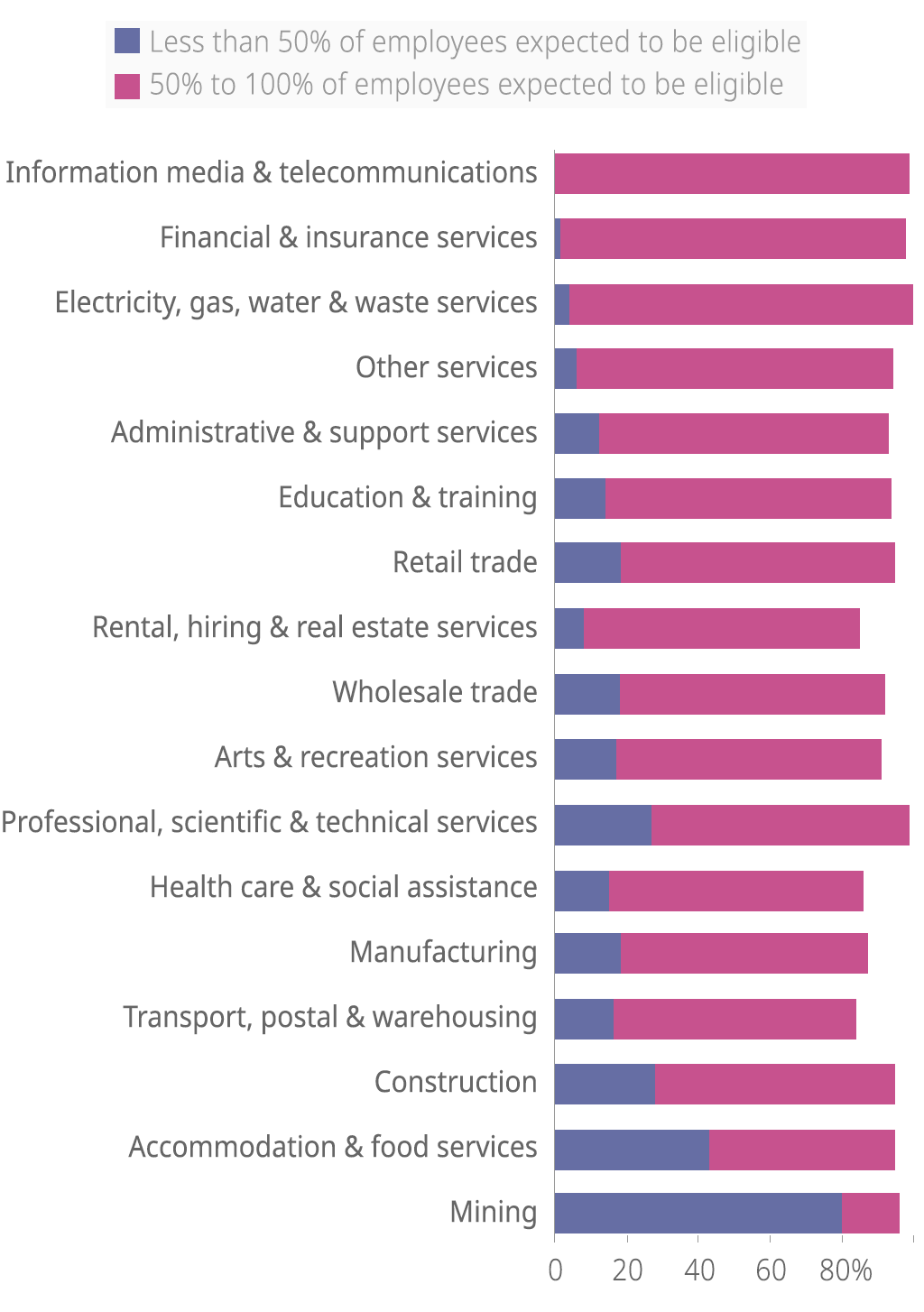
High rates of economic and emotional stress
The high rates of unemployment and reduced working hours have caused financial stress within households. This is clearly visible in the most recent release of the Household Impacts of COVID-19 .
Around 22% of people aged 18 years or over reported living in a household where at least one person faced employment-related, housing, or other financial stressors due to COVID-19.
The uncertainty surrounding the pandemic and the various financial and housing stressors faced by people has had considerable impact on people’s emotional and mental wellbeing.
An ongoing by Monash University that more than 31% of people who have lost work during COVID-19 reported high levels of psychological distress; this is four times higher than employed adults prior to the pandemic. The ABS data records many people are feeling nervous and restless.
The proportion of people who reported feelings that impacted on emotional and mental wellbeing
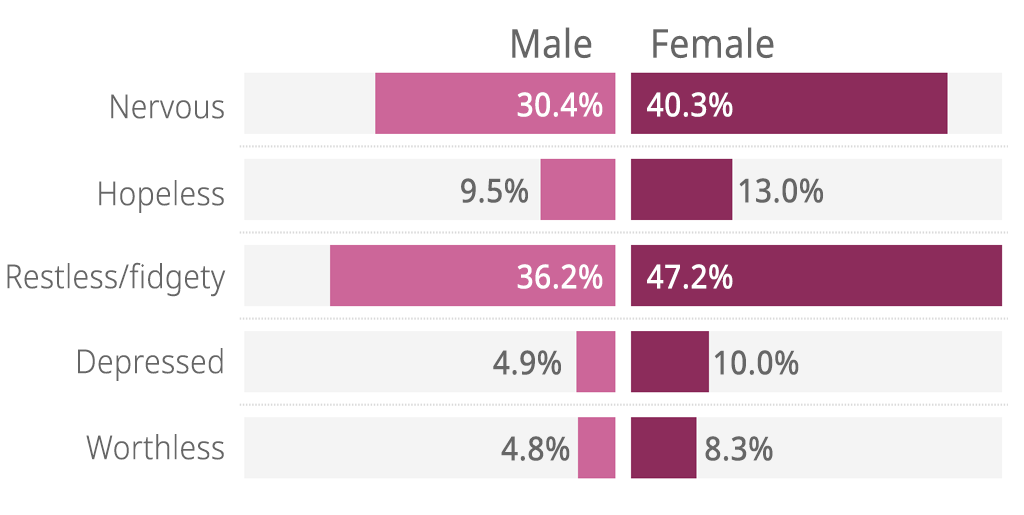
As more data is gathered, processed and released by the Australian Bureau of Statistics, the impacts of the pandemic will become clearer. There are many other measures and angles we can explore, and we encourage you to explore the wealth of data from the ABS. As always, please share your insights with us – we’d love to hear from you.
The Australian Bureau of Statistics regularly releases new data related to COVID-19. You can view all the upcoming COVID-19 related data . Or you can visit the ABS’s release .


